In his review of "Overloading Australia" by Mark O'Connor and William Lines, Frosty Wooldridge author of America on the brink who has cycled 100,000 miles across six continents in the past 25 years, refutes commonly held misconceptions that the Australian continent is underpopulated.
Also published on Australia.to News and in American Chronicle as part 1 and part 2.
With a scant 21 million people on the vast continent of Australia, how could anyone state with any certitude that Oz suffers from human overpopulation? What impudence might that take? How out of touch? How completely absurd? Definitely not 'fair dinkum'!
China features not much more land mass than Oz but houses 1.3 billion souls. The United States--at least the lower 48 states--equals about the same land mass, but houses 306 million people. Mexico, less than a quarter the size of Australia, features 108 million people.
So what's the problem? How could there be a snag? Australia encompasses an endless amount of land. It features 2,970,000 square miles of terra firma. How do I know? In 1984 through 1985, I cycled 17,000 kms around Australia including Tasmania. One Aussie, after learning that I intended to cycle the entire perimeter of Australia said, "Well Yank, you must be dead from the neck up!" I answered, "Yes, but it's a great adventure." He responded, "Do you know what the Nullabor Plains means?" I said, "No." He said, "It means treeless for 2,000 kms and 40 degrees C. every day. You'll fry in the heat!"
None the less, I traveled from Sydney down the Princess Highway to Melbourne; sailed over to Tasmania, up the Great Ocean Road to see the 12 Apostles, to Ceduna and across the Nullabor Plains (treeless) and on to Esperance and then to Perth, onward to Port Headlands and upward to Darwin. From there to Cairns and back down to Sydney! What did I see and how did I feel? I fried in the saddle and sweated while I slept at night under the Southern Cross. Withering heat at 120+ degrees F. daily! I stopped at the Great Australian Bite, saw Bondy's (Alan Bond) boat that beat the Yanks in the Americas Cup, viewed the Pinnacles of Cervantes, rode past the ant castles, witnessed the 'prison boab tree' near Port Headlands and watched the big crocs in Darwin. A frilled lizard scared the daylights out of me near Tenant Creek and I dove on the Great Barrier Reef. I read A.F. Facey's "A Fortunate Life." I'm still friends with John Brown in Kiama and Lance Hill in Perth. I've backpacked with Lance in Nepal and push-biked across the USA with John. I love Oz and its people.

So why does Australia suffer an overpopulation crisis? From my firsthand experiences, I am here to tell you: desert and sand cover 95 percent of Australia. No water and no arable land! It's a wasteland with kangaroos, emus, wombats and stray camels eking out their existences in the devil's horrid heat.

So why does Australia suffer an overpopulation crisis? From my firsthand experiences, I am here to tell you: desert and sand cover 95 percent of Australia. No water and no arable land! It's a wasteland with kangaroos, emus, wombats and stray camels eking out their existences in the devil's horrid heat. When I traveled Oz, it featured 14 million people which it could support. Today, at 21 million, it's on the edge of its own non-sustainable future. Australians might fool Mother Nature in the short term, but they cannot in the long run. Oz doesn't possess water or arable land needed to grow food thus to sustain a large human population. That's a brutal fact!
However, powerful governmental, capitalistic and growth oriented organizations expect to push Australia's population to 50 million tortured souls. Much the same holds true in the United States and other countries where 'growthists' disregard reality and push human populations beyond the ability of the land and water to sustain them. How do they do it? They promote unlimited immigration from other countries that have already exceeded their carrying capacities---and simply exhaust their excess humanity onto the shores of Australia and other countries that possess stable populations. The third world grows by a net gain of 77 million annually, so the line never ends. That alone should give any Oz citizen pause!
The author Mark O'Connor of Overloading Australia, lamented, "I found this book almost impossible to write." He found the fortitude to finish the project only after teaming with his co-author, conservationist William J. Lines.
With electrifying clarity, O'Connor and Lines spell out a sobering future for Australia. Any kangaroo could figure out what the 'kangaroo' government in Canberra cannot seem to grasp! As one man who has seen more of Australia than 95 percent of Australians, I can vouch for the fact that Oz does not possess the farmland or the water to sustain any more population.
"Rightwing growthists demand endless growth of 'the economy' backed by endless population growth," O'Connor said. "Forced since late 2006 to accept a serious public debate about water supplies and about how to maintain 'growth' without increasing greenhouse gases, they are nevertheless determined to scotch any discussion about limiting growth."
I found it exceedingly exasperating that the 'very' people in charge of Australia's future, like Prime Minister Rudd in 2008, did and does not understand the consequences of his/their own actions. He promotes a "Faustian Bargain' on every citizen in Australia that will force a "Hobson's Choice."
"Rudd announced a million new homes would need to be built over the next six years to house the influx [of people] he did not venture to question," Lines said.
Where might that influx originate? Answer: Australia immigrates roughly 300,000 people annually into its dry and dusty desert country.
Why?
"There is a powerful lobby concerned not with whether human life or that of other species would be better in a 'larger' Australia, but with profits!" O'Connor said.
What 'growthists' create stems from that "Faustian Bargain" or selling their souls to the devil of growth for the present to place everyone into an environmental and unsustainable 'hell' later. Once another five or ten million Australians manifest on that desert continent, everyone suffers "Hobson's Choice": if you pick door number A---you walk through and over a cliff. If you pick door number B---you walk through and sink into quicksand. In other words, all your choices lead to death of your civilization.
How do I know that? My cycling travels across six continents have given me a bird's eye view of death from overloaded countries. Over 18 million people starve to death or die of starvation related diseases every year. Over 10 million of them are children under the age of 12 years.
"'Business as usual' desires even more people each demanding more from a finite Nature. A sustainable future is one in which human demands on the natural environment are within the capacity of that environment to meet. It means living within a boundary set by Nature. As we are already well beyond that boundary, it means reducing our population and our per capita demand. Both! Not one or the other!" John Coulter, author "Population and Sustainability: A Global Role for Australia." (pdf, 83K)
In the first part of this book review, Overloading Australia, by O'Connor and Lines, we covered Australia's daunting future if it continues on its present immigration-driven hyper-population growth path. We discussed a "Faustian Bargain" and "Hobson's Choice." We discovered that Australia does not possess enough water or arable land to sustain more than 20 million citizens.
Yet, corporations, politicians and immigration groups known as 'growthists', defy all logic while pushing their agenda toward a 50 million population in Australia.
Oz and the United States, where I live, share similar paradigms. Both maintain stable populations via their own citizens, but both find themselves suffering hyper-population growth by immigration forced down their throats by pandering politicians. Both countries don't comprehend their end-result of relentless immigration
.
U.S. demographic expert Dr. Albert Bartlett said, "A century of 1.6 percent per year growth, which is Australia's current growth rate, would cause Australia to increase to 100 million."
It shows you that if you were riding in a car with Kevin Rudd, he would drive over a cliff and take you with him. Once you arrived in Heaven, and you asked him why he did that, he might answer, "I didn't realize where I was going."
The fact remains, folks pushing growth agendas don't understand where they take Australia, but overpopulation advocates drive Oz over a cliff.
"First, we need to clear away a quite different objection," O'Connor said. "Clearly the writers of this book care about nature. So why, some conservationists will ask us, are we writing about the number of people, instead of worrying about the amount of damage each person does?"

You'll hear about tons of people pushing alternative gardening, alternative energy and all sorts of environmentally feel-good concepts that fail to address the one issue that will negate all their efforts.

Obviously, like in the U.S., Australian media and politicians deftly avoid the population issue. It's the sacred cow of Faustian proponents. You'll hear about tons of people pushing alternative gardening, alternative energy and all sorts of environmentally feel-good concepts that fail to address the one issue that will negate all their efforts. No matter how many new energy saving light bulbs or 100 kilometers to the liter of gas automobiles or water conservation---when you add another 10 million people, you lose on all counts.
It's simple mathematics, but those devils drive you toward the cliff by spinning the facts into confusion! Amazingly, they assume they are not, nor are their children vulnerable to the consequences.
Simon Grose, writing in the Canberra Times, in 2007, said, "Can we really expect to increase our numbers by about 30 percent over 50 years and keep all fed and comfortable with the hope of a car and a fridge without raising greenhouse emissions? No way!"
Finally, a mind that writes a reality based piece! What a concept! Reality! Deal with it or be swept away by it!
"No one wants to go back to rushlights and mule-back," Lines said. "But there are just two problems. First, any interruption to the power-supply brings chaos and before long, deaths. Second, there seems no way that the planet can provide resources for this lifestyle to be shared by nearly seven billion people, let alone another two or three billion by 2050."
At the head of each chapter, O'Connor and Lines place compelling quotes from experts and world leaders. It doesn't take a Sydney lawyer with an ounce of common sense to connect the dots! Australia already stands in the cross-hairs of terrible environmental conflict with its own human numbers.
Mikhail Gorbachev said, "We are all passengers aboard one ship, the Earth, and we must not allow it to be wrecked. There will be no second Noah's Ark."
What I found most compelling with O'Connor's work stems from the fact that I have witnessed firsthand the ramifications facing other countries that allowed their populations to spin out of control. For example, Bangladesh, not much bigger in landmass than Tasmania, houses 144 million people. Can any Australian fathom Tasmania with 144 million people? That's what's happening worldwide and that's why people flee those countries by the millions.

nstead of absorbing an unending line of immigrants, Australia and other first world countries might help those other countries by NOT taking their refugees, but instead, send them birth control and family planning along with food production techniques and water purification. Help them in their own countries.

Instead of absorbing an unending line of immigrants, Australia and other first world countries might help those other countries by NOT taking their refugees, but instead, send them birth control and family planning along with food production techniques and water purification. Help them in their own countries. If they refuse help, then, in the final analysis, they must suffer their own Malthusian overload. If Australia keeps taking immigrants, then, Australia becomes another Bangladesh or variation thereof at some point in this century.
"Most Western elites continue urging the wealthy West not to stem the migrant tide, but to absorb our global brothers and sisters until their horrid ordeal has been endured and shared by all--ten billion humans packed onto an ecologically devastated planet." Dr. Otis Graham, Unguarded Gates
In chapter 5, the authors land, like the shocking wildfires in Sydney and NSW last year, with a savage reality punch: food or the scarcity of it!

The Green Revolution is basically over, it's gains already cancelled by population growth.

"There are several reasons why Earth is failing---but they all come down to the fact that an increasing number of people are making increasing demands on a single planet," Lines said. "The Green Revolution is basically over, it's gains already cancelled by population growth."
To attest to that fact, an average of 18 million people die of starvation or starvation related diseases annually worldwide. I can say, that in my world bicycle travels, I've seen those deaths firsthand. It's not a benign statistic to me; it's a harsh visual reality. If you look at any "Save the Children" program begging to feed the children, you have seen what I have seen. For anyone that really wants to save the children, first world countries should send birth control with food. (www.quinacrine.com)
"Humans will continue to clear the diminishing lands left to other species," O'Connor said. "Wreaking disaster upon creatures already pushed to the margins."
Worldwide, humans cause the extinction of 100 creatures daily via human encroachment on habitat. In Oz, many kangaroos suffer endangerment as well as dozens of other species.
"The debate ought to be about the carrying capacity of the continent---a continent that has lousy soils, fragile soils and depleted and degraded river systems." Bob Carr, writing for Weekend Australian, June 1994
In the third part of this book review, Overloading Australia by O'Connor and Lines, we covered the fact that Australia cannot sustain added population numbers as to food, energy and water. That hasn't stopped 'growthists' in their 'spin' to obfuscate the realities facing the 'desert continent'.
The authors covered the 'refugee' dilemma, but again, the world grows by 77 million annually, which leaves long-term immigration a futile gesture. At some point, all civilizations must come to terms with their own numbers and their own recovery.

... what's the point of growing more population in Australia when you see what it did to China, India, Indonesia and other hyper-populated countries? Let's face it, the reason those immigrants flee their countries provides the exact reason Australia should stabilize its own population in order to remain within its carrying capacity.e

How many more people can Australia sustain? Short answer: not many! The most realistic question arises from anyone with a three digit IQ: what's the point of growing more population in Australia when you see what it did to China, India, Indonesia and other hyper-populated countries? Let's face it, the reason those immigrants flee their countries provides the exact reason Australia should stabilize its own population in order to remain within its carrying capacity.
John Coulter said in a letter to the editor in The Age, "If I were a Melbournian, I would not reduce my water consumption until Premier Bracks abandons his crazy plan to bring another million people into Melbourne. Why should I save to have my savings squandered by an irresponsible Premier and leave my children in an even worse situation than today?"

The question that Planning Minister Justin Madden should ponder is: how do we cater for increased population given that our rivers, dams and reservoirs are drying up, the drought shows no sign of breaking, one-third of the state is affected by bushfires, and blackouts are becoming commonplace?

Another writer said, "We have been told that Melbourne must populate or perish and that by 2030 we must absorb another one million residents. The question that Planning Minister Justin Madden should ponder is: how do we cater for increased population given that our rivers, dams and reservoirs are drying up, the drought shows no sign of breaking, one-third of the state is affected by bushfires, and blackouts are becoming commonplace?"
O'Connor addressed the 'shortage of workers' façade that also occurs in the United States. While 2.4 million legal and illegal migrants pour over our borders annually, corporations demand hundreds of thousands of work visas for foreign workers.
However, as of March 2009, the U.S. suffers an 11.1 percent unemployment rate and 32.2 million Americans live on food stamps. Yes, that number 32.2 million is correct!
If Australia's politicians prove as cunning and feckless as my country's leaders, both our countries face being overwhelmed by the third world---again with no end of the line of immigrants fleeing their own misery as they grow by 77 million annually. Once millions of poor established in both our countries, our poverty rates, language chaos and sustainability will not survive.
While you read this book, you can't put it on the coffee table. Every chapter enlightens you to greater understanding. If you feel like it, start yelling at the top of your lungs, because it could put you into a logical rage.
"We know that by mid-century the world population is going to be as high as 10 billion people. The world advice is that, that simply cannot be sustained. We are down to fewer than 50 days of flow-on food availability to meet any great emergency and will be facing a mammoth, chaotic social outcome of too many people with too few resources on the planet in the lifetime of some of us here. That is why I asked the government whether it had a population policy, and I do not believe it does," Bob Brown in the Senate, September 16, 2008
That same applies to the U.S. It causes you to wonder if the patients run the insane asylum. Why can the media and government maintain such a high level of arrogance and stupidity side by side?
One writer said, "How can you kill a planet and still expect to live on it?"
O'Connor and Lines in the final chapters of the book provide a sobering rendition of the consequences of endless growth to the 'desert continent'. I invite every politician, college professor, high school and college student in Australia---to read this book. It needs to be read in boardrooms and bedrooms of parents. It needs reviews by every critic across Australia. It needs to be a best seller in the first world. Every mother and father needs to read it because their kids will be wrapped up in this great 'human dilemma'.
Thankfully, the authors addressed 'racism' in the book. I can vouch for Mother Nature that she doesn't care what your race, creed or color happens to be when your species overwhelms its carrying capacity. Mother Nature kills and cripples without prejudice. As in Chapter 15 of the book, "Fooling people, fooling nature", you bluff Mother Nature for only so long, and then, she will kick your Aussie ass! That blunt, that simple!
The Danish philosopher Soren Kierkegaard said, "Twaddle, rubbish and gossip is what people want, not action. Politicians know this. Aided by the media and cheered by intellectuals, they peddle illusion, fantasy, myth, faith and hope."
"But then there is the natural world," O'Connor said. "It's vastly different from politics and our delusions. People can be fooled over and over again, but nature cannot, not even once."
At the end of the book, Lines and O'Connor show how 'green groups' avoid the population equation along with the media. It's a cute and dangerous façade. They address the "Aborigines" guilt complex. They talk about climate change and ecological footprint. They nail it!
"You'd have to be an economist or a fool to think you can keep adding population forever!" said Kenneth Boulding, economist.
While the authors present cogent advice at the end of the book, I found myself laughing out loud at one of their ideas. "Why we should all waste water!" While all the environmentalists and do-gooders cry out to conserve, and the same happens with the Sierra Club in America, all the conservation in the world won't help as Australia adds another 10, 20, 30 or 50 million people. Therefore, start wasting as much water as possible today to force the population issue to the front burner. Frankly, it will power its way into the public's attention either now or later.
As I said at the beginning of this review, I've already seen what's coming in my world cycling travels. It's not pretty. Instead of walking that same perilous path as overpopulated countries, I invite every Australian to read this book, heed its wisdom and change course toward a sustainable nation and bright future for all Australians. Call for an "Australian Sustainable Population Policy" that limits mass immigration to near zero. You cannot save the rest of the world, but you can destroy your own civilization or turn it into a water starved, food scant and quality of life nightmare. Your children will thank you in 2050 and the world will thank you for leading the way for humanity toward a plausible and livable planet. By the way, the rest of Earth's creatures will thank you, too!
Overloading Australia: How governments and media dither and deny on population
Mark O'Connor & William J. Lines
America on the brink: the next added 100 million Americans
By Frosty Wooldridge

Published April 27, 2009; Available at 1-888 280 7715; Barnes and Noble www.barnesandnoble.com ; Borders ; Amazon www.Amazon.com
Reviewers - Radio, TV, newsprint: for complimentary media copy, call Yvona Doane: 1 888 519 5121 Ext. 5299
"Eye-opening, incisive, brilliant!
"The U.S. has the fastest growing population of any industrial nation, and one of the world's highest consumption rates. Water, topsoil, forests, fish, petroleum... the more of us, the more pressure we exert on our environment. Many discuss our personal consumption patterns, but few dare talk about the underlying crisis of population growth. Wooldridge is one of the few courageous voices warning us about the implications of our current direction, and informing us what we can do to change course."
- Richard Heinberg, author of Peak Everything
"Electrifying reading! This is a veritable cannonade of a book.
"Wooldridge targets the people and institutions, from the President on down, who refuse to look at the consequences of population growth in the modern era. His focus is on the United States, but his range is the world.
"He fearlessly addresses issues that politicians fear to mention, such as the effects of mass immigration on our population future and our social systems. He engages to force population issues into our local and national political decisions."
- Lindsey Grant, former Deputy Assistant Secretary of State for Environment & Population
"The environmental community may be outrageously AWOL on the important subject of population, but not Frosty Wooldridge. Read this book!"
- Richard D. Lamm, Governor of Colorado 1975-1987
"Wooldridge's powerful indictment of our political leaders for failing to address U.S. overpopulation should be required reading in classrooms and boardrooms.
"To mindlessly add 100 million more people to our nation's population in the next 30 years will put the United States economy and social order at further risk. His challenge needs to be addressed on individual, national and international levels before it's too late."
- William B. Dickinson, The Biocentric Institute
America on the Brink: The Next Added 100 Million Americans --
injects a whole new dynamic facing the United States in the 21st century. While national leaders at every level ignore accelerating consequences, immigration-driven hyper-population growth will become THE single greatest issue facing America in the years ahead.
In adding 100 million people by 2035, every crisis facing Americans today accelerates in harsher consequences -- whether it is water shortages, climate change, energy scarcity, dwindling resources, gridlock, air pollution and a decline of quality of life.
Wooldridge compellingly states the obvious... the U.S. cannot continue unplanned population expansion indefinitely.
He offers Hobson's Choice as a final result of mass denial. If the U.S. adds another 100 million people via immigration, it faces two doors:
-- if the country picks door # 1, this civilization walks over a cliff.
-- If it picks door # 2, it walks into quicksand.
Once that 100 million people manifest, no one, no matter what their race, creed or color---escapes. Americans will endure water shortages, energy problems, crowding and a much diminished standard of living. The American Dream will no longer be available.
However, Frosty offers concrete ways to change the future. In all great social change, it takes a 'conscious shift' that leads to a 'critical mass shift' and finally, a 'tipping point' whereby a civilization turns toward a sustainable and viable future. It's up to each citizen and leader to make sure that 'tipping point' occurs.
The fate of this civilization hangs in the balance.
Author Contact: www.frostywooldridge.com



 Human Population growth impacts on wildlife: The endangered Earless Dragon is being used to justify killing thousands of Eastern Gray kangaroos in Belconnen and Majura, but the motive is really developers' profit. As grasslands are turned into building sites, as human population growth is encouraged.. Kangaroos are in the way, as is democracy, so both are being buried. See also:
Human Population growth impacts on wildlife: The endangered Earless Dragon is being used to justify killing thousands of Eastern Gray kangaroos in Belconnen and Majura, but the motive is really developers' profit. As grasslands are turned into building sites, as human population growth is encouraged.. Kangaroos are in the way, as is democracy, so both are being buried. See also:

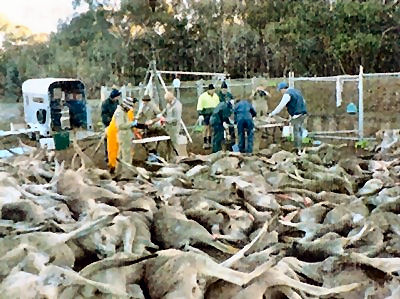 (Illustration of dragon as gun by Carol.)Thousands of Eastern Grey kangaroos have recently been shot and bulldozed into pits in Belconnen and Majura, [1] Australian Capital Territory (ACT), in fatal massive round-ups which have not been seen since early last century. In a torrent of official reports and statements, scientists and politicians have fingered the Eastern Grey Kangaroo for overgrazing rare grasslands and thus threatening their other inhabitants, notably the endangered Earless Dragon.
(Illustration of dragon as gun by Carol.)Thousands of Eastern Grey kangaroos have recently been shot and bulldozed into pits in Belconnen and Majura, [1] Australian Capital Territory (ACT), in fatal massive round-ups which have not been seen since early last century. In a torrent of official reports and statements, scientists and politicians have fingered the Eastern Grey Kangaroo for overgrazing rare grasslands and thus threatening their other inhabitants, notably the endangered Earless Dragon.
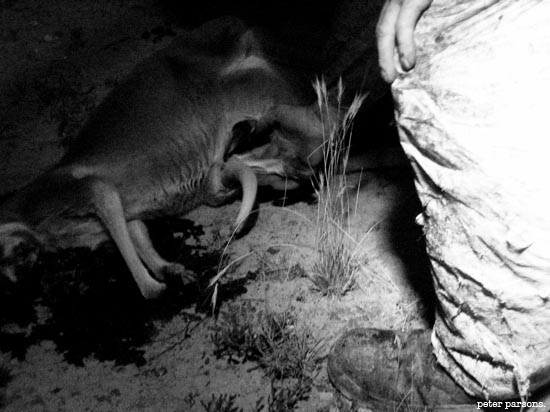






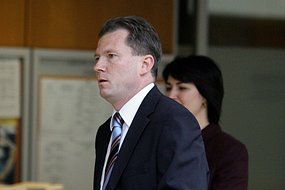

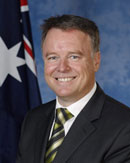
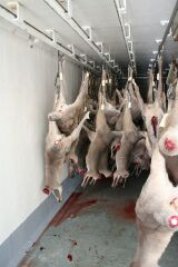
 To achieve this bootstrap economy, this Australian sideshow of perpetual motion, or the revival of dead spirits, the PM has invented something called the Australian Business Investment Partnership (ABIP). It's a public-private partnership between the Federal government and the commercial property sector. The Developers and the big four banks think it's just great - so that's okay ... isn't it?
To achieve this bootstrap economy, this Australian sideshow of perpetual motion, or the revival of dead spirits, the PM has invented something called the Australian Business Investment Partnership (ABIP). It's a public-private partnership between the Federal government and the commercial property sector. The Developers and the big four banks think it's just great - so that's okay ... isn't it? 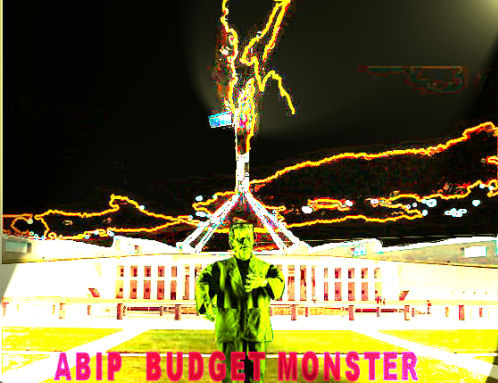

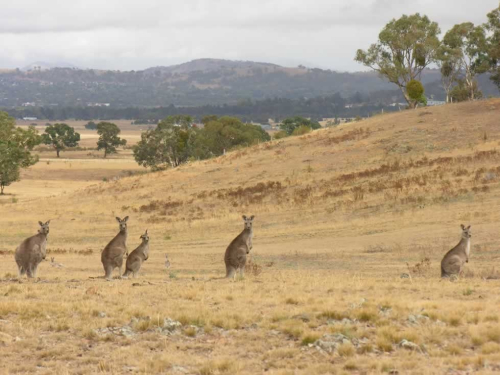
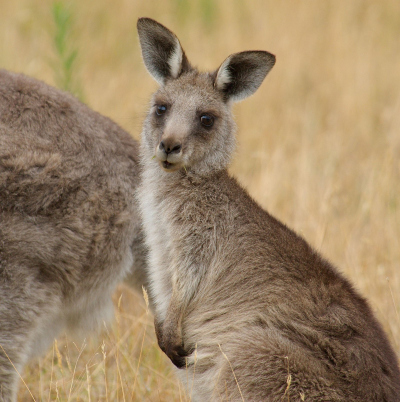
 Tide's out for marine developers
Tide's out for marine developers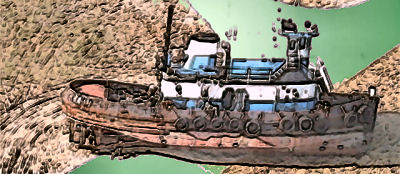
 Australians will recognise this ubiquitous design in this marine development residence
Australians will recognise this ubiquitous design in this marine development residence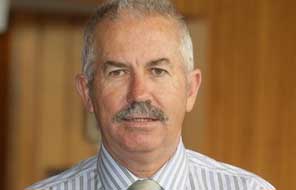

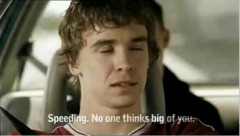

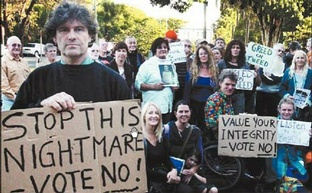







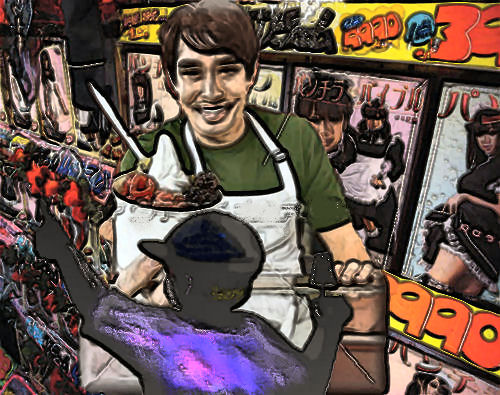
Recent comments